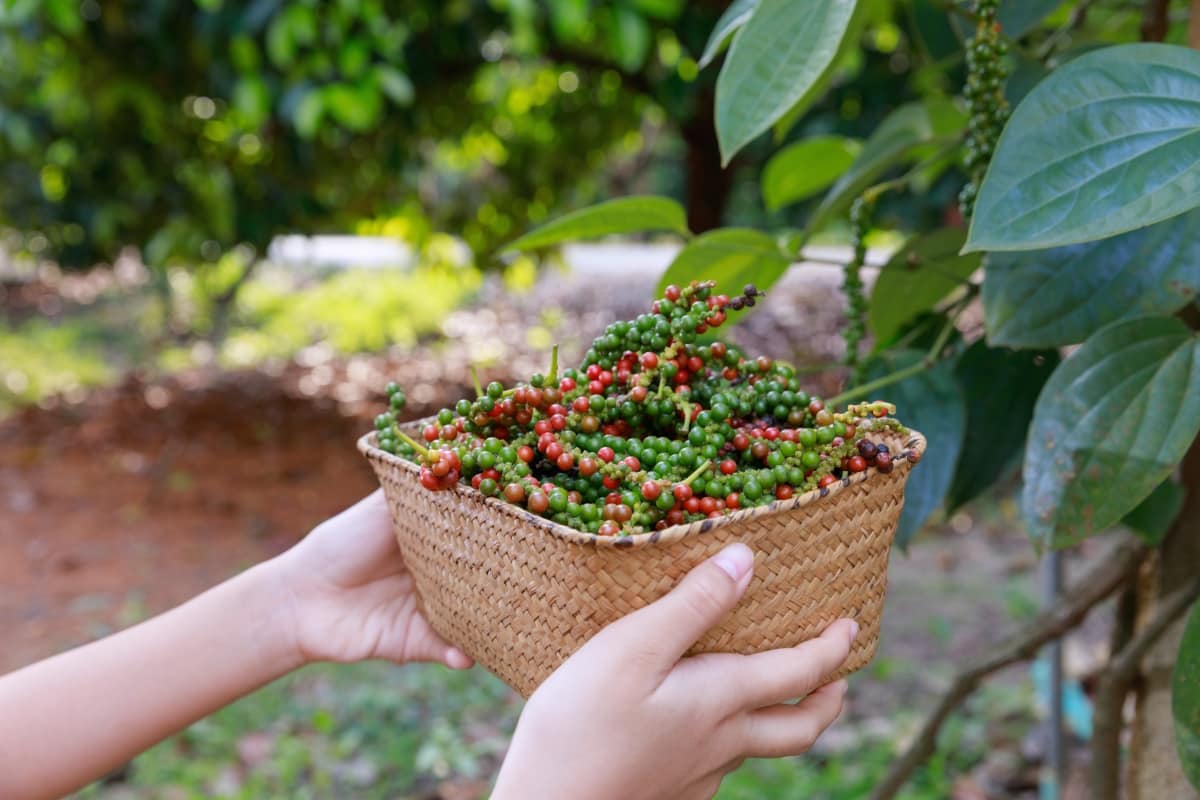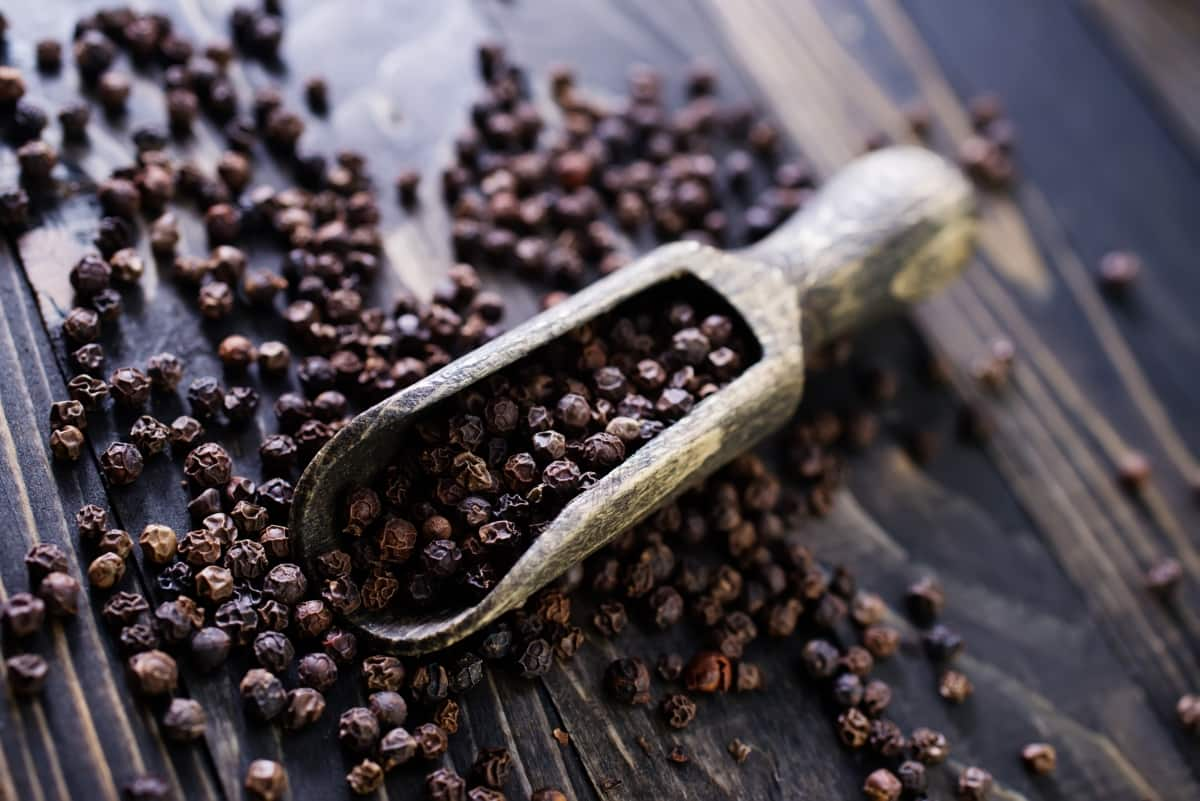Achieving high yields in Black Pepper cultivation requires careful attention to various factors, from soil conditions and pest management to planting techniques and post-harvest methods. From preparing the soil and providing adequate fertilization to employing correct planting techniques, every step plays a key role in promoting the healthy growth of Black Pepper vines.

How to Boost Black Pepper Yield
Maximizing Black Pepper Production: Advanced Techniques and Strategies
Black Pepper is a highly valued crop that has been cultivated for centuries. To ensure maximum productivity and yield in Black Pepper cultivation, farmers need to adopt advanced techniques and strategies. One key technique is proper spacing between plants. By providing adequate space, each plant can access essential nutrients, sunlight, and air circulation. This promotes healthy growth and minimizes competition among plants.
Another strategy is the use of high-quality planting material. Farmers should obtain disease-free cuttings from reputable sources to ensure strong and vigorous plants. These healthy plants are more likely to withstand pests and diseases, resulting in higher yields. Furthermore, implementing integrated pest management practices is crucial for successful Black Pepper production.
This approach combines various pest control methods such as biological control agents, cultural practices like crop rotation, and judicious use of pesticides when necessary. This not only reduces chemical inputs but also minimizes the risk of pesticide resistance. Additionally, regular monitoring of soil fertility levels is vital for maximizing Black Pepper production. Conducting soil tests helps determine nutrient deficiencies or imbalances, which can be corrected through targeted fertilization programs tailored to specific needs.
Enhancing Black Pepper Yield: Comprehensive Guide to Soil Fertility Management
Soil fertility management is a crucial aspect of Black Pepper cultivation that plays a significant role in enhancing yield. To ensure optimal growth and productivity, farmers need to implement comprehensive strategies for maintaining soil health. One key element in soil fertility management is organic matter enrichment. Adding compost or well-decomposed manure to the soil not only improves its structure but also enhances nutrient availability. Another important factor to consider is proper pH balance.
Black Pepper prefers slightly acidic soil with a pH range of 5.5-6.5. Regular soil testing helps determine the current pH levels and allows farmers to make necessary adjustments by adding lime or sulfur-based products accordingly. Additionally, micronutrient deficiencies can limit crop productivity. Conducting regular soil tests will help identify any imbalances and allow for targeted fertilization with micronutrients such as boron, zinc, manganese, and iron.
Applying balanced fertilizers based on the specific nutrient requirements of Black Pepper plants ensures optimal nutrition uptake without causing excessive vegetative growth or nutrient leaching into groundwater sources. Moreover, practicing crop rotation can benefit both the soil’s nutrient content and pest control efforts in Black Pepper cultivation systems. Rotating crops can break disease cycles while replenishing nutrients through different plant residues left behind after harvest.
Effective Pest Control Methods for Higher Black Pepper Crop Yield
Pests can wreak havoc on Black Pepper crops, causing significant damage and reducing overall yield. To ensure a higher crop yield, it is crucial to implement effective pest control methods that target these invaders while minimizing harm to the environment. One of the key approaches in pest control is integrated pest management. This method combines various strategies, such as cultural practices and biological controls.
By employing these techniques, farmers can reduce reliance on chemical pesticides and encourage natural predators to keep pests in check. Cultural practices play a key role in preventing pest infestations. Regular weeding and proper sanitation are essential for removing potential hiding places for pests. Additionally, rotating crops can disrupt the lifecycle of many common pests. For instance, certain insects like ladybugs or parasitic wasps feed on aphids and other harmful insects that attack Black Pepper plants.
Innovative Irrigation Solutions to Boost Black Pepper Growth and Yield
Traditional methods may not always be sufficient, especially in regions with unpredictable rainfall patterns. That’s where innovative irrigation solutions come into play – they can help you optimize water usage and ensure that your Black Pepper plants thrive. One such solution is drip irrigation, which involves delivering water to the roots of the plants through a system of tubes with small holes.
In case you missed it: Everything You Want to Know about Habanero Peppers: Origin, Benefits, Scoville Heat Units and Growing

This method minimizes water wastage by providing moisture exactly where it’s needed most, reducing evaporation and runoff. Another effective technique is using sprinkler irrigation. By evenly distributing water over the entire field, this method helps maintain optimal soil moisture levels for Black Pepper cultivation. However, it’s essential to choose sprinklers suitable for your specific soil type and plant density to avoid overwatering or underwatering.
Climate-Adaptive Strategies for Increasing Black Pepper Crop Productivity
Black Pepper cultivation is heavily influenced by climate conditions, making it crucial to implement climate-adaptive strategies to maximize crop productivity. With changing weather patterns and increasing uncertainties in climatic conditions, farmers must adapt their practices to ensure optimal growth and yield of Black Pepper plants. One effective strategy is the use of shade trees. These trees protect from excessive sunlight and help regulate temperature fluctuations, creating a microclimate that is favorable for Black Pepper growth.
By strategically planting shade trees around the Black Pepper plantation, farmers can reduce heat stress on the plants and minimize water loss through evaporation. Another climate-adaptive approach involves mulching. It helps maintain an even soil temperature throughout the year, minimizing extreme temperature fluctuations that can adversely affect Black Pepper plants.
Organic Fertilizers: A Sustainable Approach to Elevating Black Pepper Yields
In Black Pepper cultivation, using organic fertilizers can be a sustainable approach to maximize yields while minimizing environmental impact. Compared to synthetic fertilizers, organic alternatives offer a more balanced nutrient composition that promotes overall plant health. Another benefit of organic fertilizers is their ability to increase soil structure and fertility over time.
By adding organic matter to the soil, these fertilizers increase its water-holding capacity and promote better root development. Additionally, they foster beneficial microbial activity in the soil, leading to improved nutrient availability for Black Pepper plants.
Pruning Practices for Optimal Growth and Yield in Black Pepper Cultivation
Pruning plays a key role in promoting optimal growth and maximizing yields in Black Pepper cultivation. By selectively removing unwanted branches, growers can ensure that the plant’s energy is directed towards essential areas, such as fruit and flowering. When it comes to pruning Black Pepper plants, timing is key. It is recommended to prune during the off-season or immediately after harvest when the plant enters its dormant phase. This allows for better regrowth and minimizes stress on the plant.
In case you missed it: Mad Hatter Peppers Review: The Scoville Scale, Origins, History, Benefits, and Growing from Seed

During pruning, it is important to remove dead or diseased branches as they can hinder healthy growth and serve as breeding grounds for pests and diseases. Additionally, thinning out overcrowded areas allows for better air circulation and light penetration, reducing the risk of fungal infections. Growers should also consider training their Black Pepper vines onto support structures such as trellises or poles. This promotes upward growth and helps optimize space utilization within the cultivation area.
Integrated Nutrient Management for Improved Black Pepper Crop Performance
One of the key factors in maximizing Black Pepper yield is implementing an effective integrated nutrient management strategy. By providing the crop with a balanced and diverse range of nutrients, farmers can ensure optimal growth and productivity. A crucial step in integrated nutrient management is soil testing. This allows farmers to understand the specific nutrient deficiencies present in their soil and tailor their fertilization program accordingly.
By supplementing deficient nutrients through organic or synthetic fertilizers, farmers can address these imbalances and promote healthy plant development. Crop rotation is another essential practice that contributes to improved Black Pepper crop performance. Rotating crops helps break pest cycles, reduces disease incidence, and enhances overall soil health.
Alternating Black Pepper cultivation with legumes or other nitrogen-fixing plants replenishes soil fertility while reducing reliance on chemical inputs. In addition to fertilizer application and crop rotation, adding organic matter into the soil is vital for sustaining long-term fertility. Organic matter enhances soil structure, water-holding capacity, and nutrient retention. Farmers can achieve this by using compost, green manure crops, or mulching techniques.
Black Pepper Yield per Acre and Black Pepper Yield per Plant
When it comes to Black Pepper cultivation, understanding the yield per acre and yield per plant is crucial for optimizing productivity. These two metrics provide valuable insights into the overall performance of your Black Pepper crop. On average, an acre of properly managed Black Pepper plantation can produce between 450 and 1134 kg of dried peppercorns. The yield per plant can change depending on various factors such as soil conditions, climate, cultivation practices, and pest management. However, on average, a well-maintained Black Pepper plant can produce around 1-2 kilograms of dried peppercorns.
In case you missed it: Everything You Need to Know About Pepper Plant Spacing

Conclusion
With careful attention to detail throughout every stage of cultivation – from seed selection to harvest – growers have the power to elevate not just individual yields but also contribute towards overall industry growth.
- Feed Your Flock for Less: Top 10 Tips to Save on Chicken Feed
- Ultimate Guide to Ossabaw Island Hog: Breeding, Raising, Diet, and Care
- Hatching Answers: The Top 10 Reasons Your Chickens Aren’t Laying Eggs
- Eggs and Economics: Breaking Down the Cost of Raising Backyard Chickens
- Defend Your Greens: Proven Methods to Keep Iguanas Out of Your Garden
- Ultimate Guide to Cinnamon Queen Chicken: A Comprehensive Guide for Beginners
- Ultimate Guide to California Tan Chicken: Breeding, Raising, Diet, Egg-Production and Care
- Ultimate Guide to Marsh Daisy Chicken: Breeding, Raising, Diet, and Care
- 10 Types of Chicken Farming Businesses You Can Start for Profits